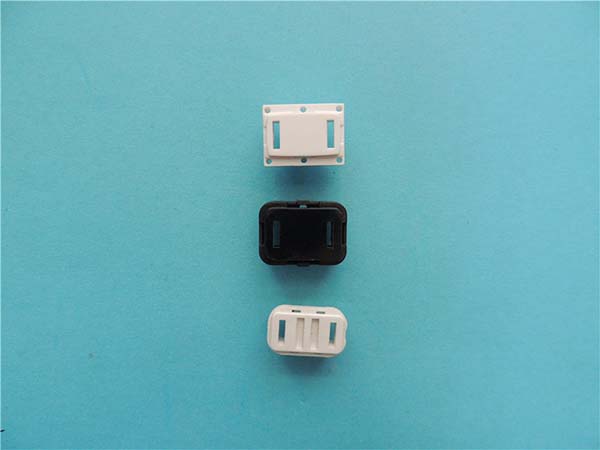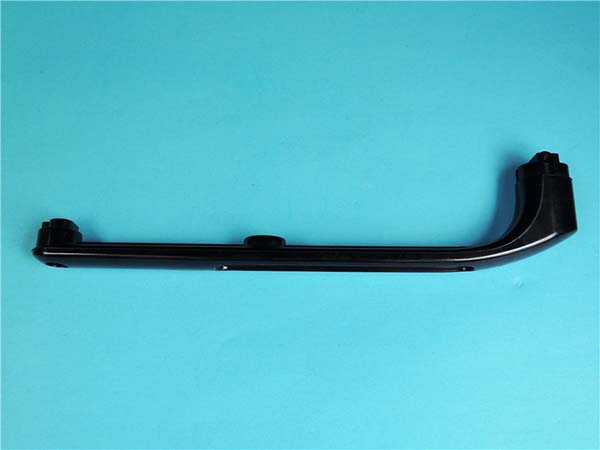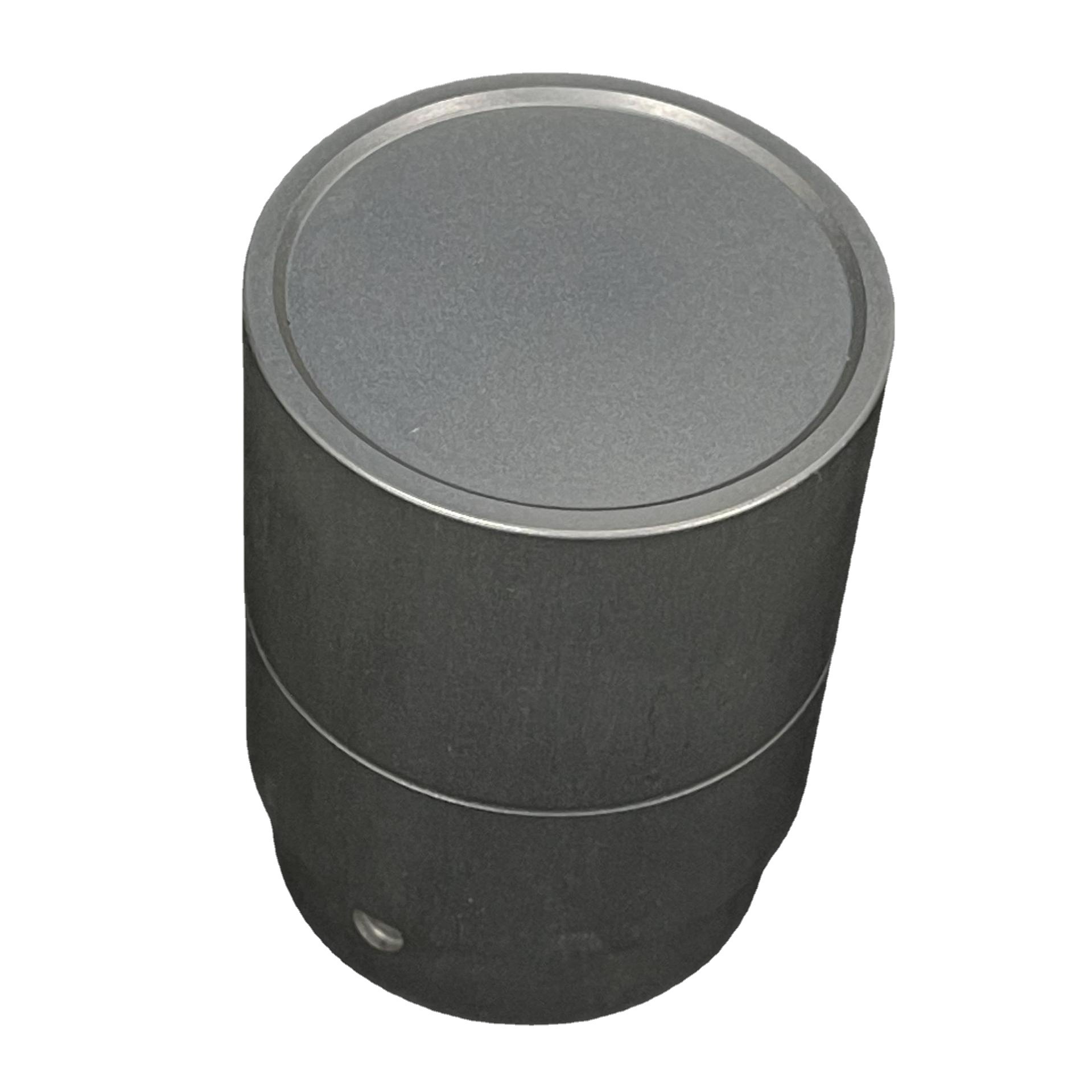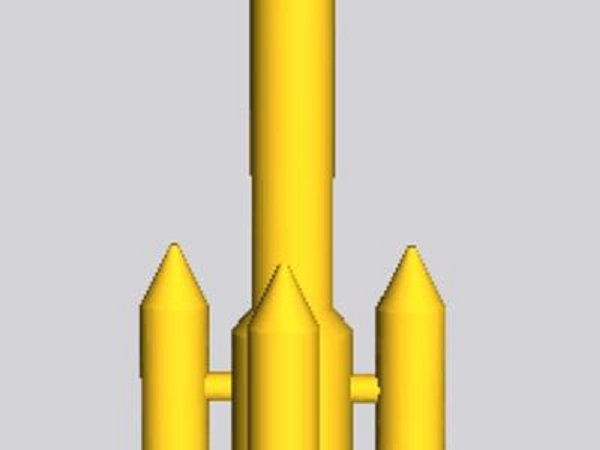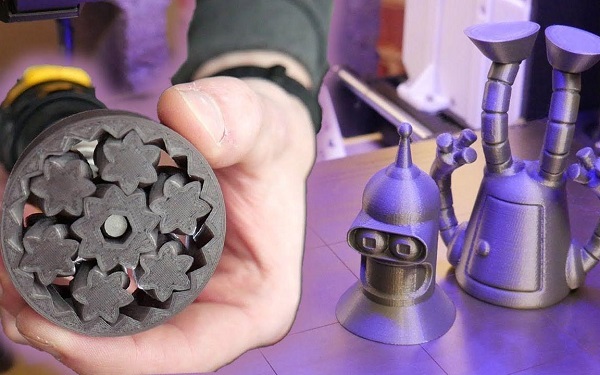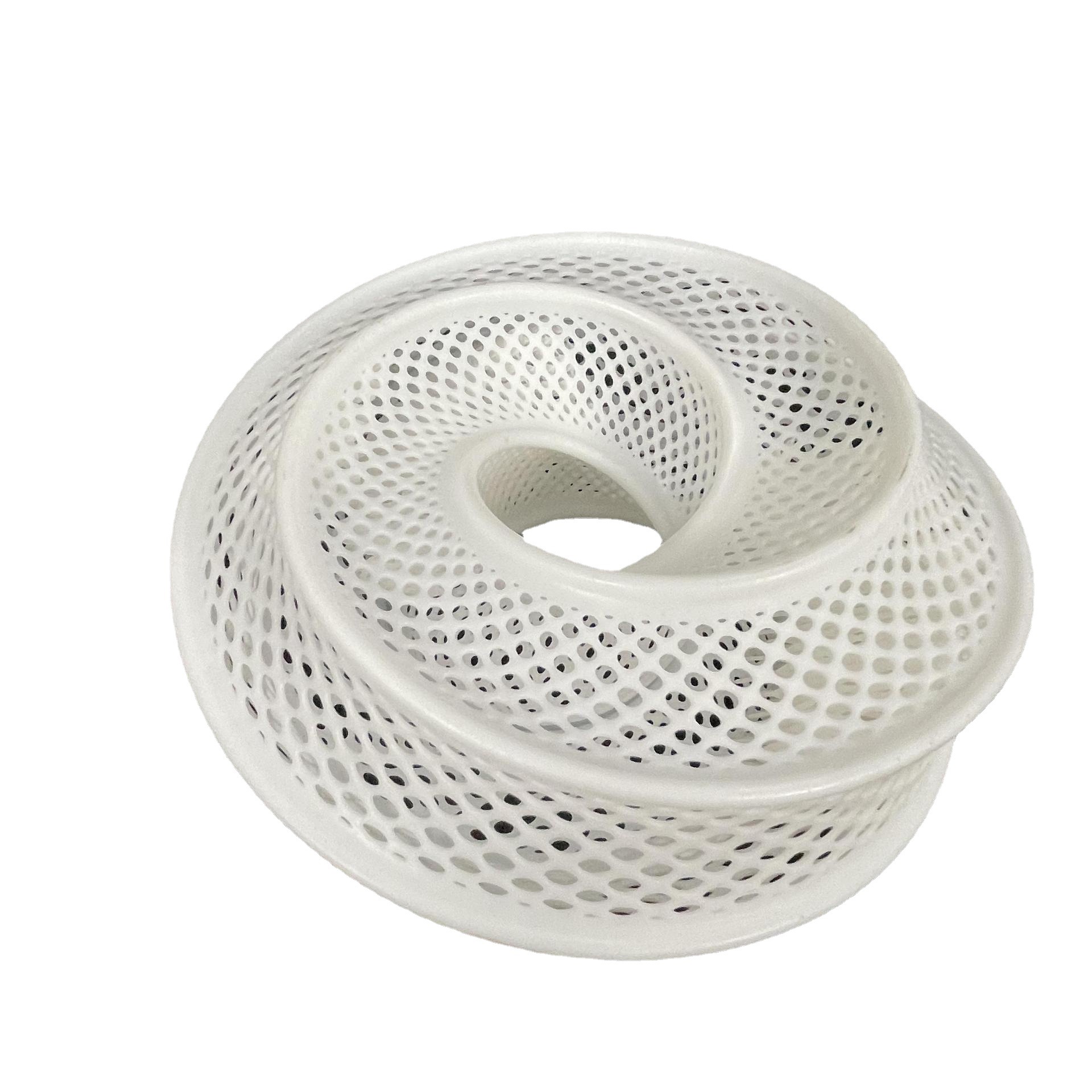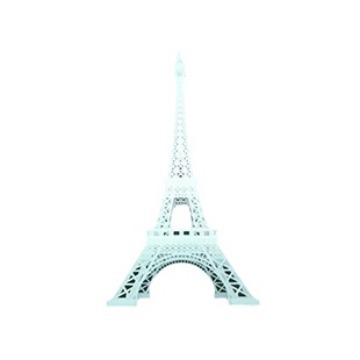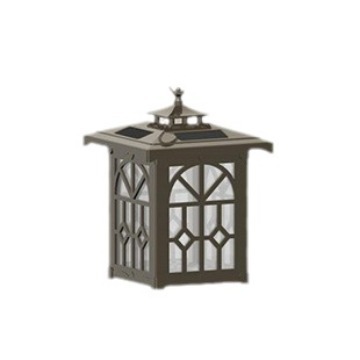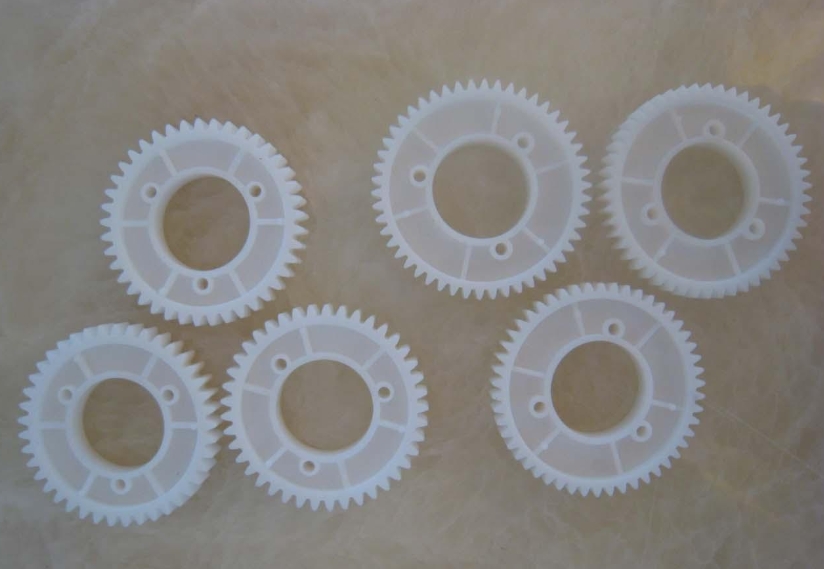1. Introduction
1.1 Definition of 3D Printed Jewelry
3D printed jewelry is a revolutionary approach to jewelry creation that utilizes additive manufacturing technologies. Instead of traditional methods like casting, forging, or hand - carving, 3D printing builds jewelry pieces layer by layer from digital designs. This process starts with a 3D model, which can be created using computer - aided design (CAD) software, 3D scanning technology, or even generated algorithmically.
The materials used in 3D printed jewelry are diverse. Metals such as gold, silver, platinum, and titanium can be printed using powder - bed fusion techniques. For Yigu Technology example, in direct metal laser sintering (DMLS), a high - power laser fuses metal powder together, layer by layer, to form the desired jewelry shape. Non - metallic materials like nylon, resin, and even some biodegradable polymers are also popular. Nylon, for instance, is often used for its durability and flexibility, while resin can produce highly detailed and smooth - finished jewelry pieces, especially when using stereolithography (SLA) 3D printers.
2. The Traditional Jewelry Making Process
2.1 Design Phase
In traditional jewelry making, the design phase often begins with the designer sketching their ideas by hand. This is a fundamental step where the initial concept takes shape. Designers use pencils, colored pencils, and watercolors on paper to create detailed illustrations of the jewelry piece. These sketches are not only a visual representation of the design but also a way for the designer to experiment with different shapes, proportions, and arrangements of elements such as gemstones and metalwork. For Yigu Technology example, when designing a necklace, the designer might draw multiple versions, each with a different pendant shape, chain style, and gemstone placement.
2.2 Manufacturing Phase
The manufacturing phase in traditional jewelry making is a complex and labor - intensive process that involves several distinct techniques.
Casting: One of the most common methods is casting. This process starts with creating a wax model of the jewelry piece. The wax model is made by carving wax or using a pre - made wax mold. Once the wax model is complete, it is invested in a plaster - like material to create a mold. The mold is then heated to melt out the wax, leaving a cavity in the shape of the jewelry. Molten metal, such as gold, silver, or bronze, is poured into the cavity. After the metal cools and solidifies, the mold is broken away, and the metal jewelry piece is revealed. However, the piece still requires further finishing, such as filing, sanding, and polishing to achieve the desired smoothness and shine.
Forging: Forging is another technique where a metal blank, usually in the form of a bar or sheet, is heated and then shaped using hammers and anvils. This process gives the metal a unique texture and strength. For Yigu Technology example, a simple gold ring might be forged from a gold wire. The wire is heated until it is malleable, and then it is hammered into a circular shape on an anvil. The edges are then smoothed, and the ring is sized to fit the wearer. Forging is often used for creating more rustic or textured jewelry pieces, as the hammer marks can add an artisanal touch.
Gemstone Setting: Setting gemstones is a crucial and highly skilled part of the traditional jewelry - making process. There are several types of gemstone settings. Prong setting, for example, uses small metal prongs to hold the gemstone in place. The prongs are bent over the edges of the gemstone to secure it. Bezel setting involves creating a metal rim around the gemstone, which completely encircles and holds it. Channel setting is used when multiple gemstones are set in a row, with the gemstones placed in a metal channel and held in place by the sides of the channel. Each setting method requires precise craftsmanship to ensure that the gemstones are securely held and that their beauty is maximized.
This manufacturing phase is extremely time - consuming. A simple piece of jewelry, such as a pendant, can take several days to complete, from the initial wax model creation in casting to the final gemstone setting. For more complex pieces, like a multi - gemstone necklace with intricate metalwork, the process can take weeks or even months, depending on the level of detail and the number of steps involved.
2.3 Limitations in Customization
Traditional jewelry - making processes have significant limitations when it comes to customization.
| Aspect | Traditional Jewelry Making | 3D Printed Jewelry |
| Design Creation | Hand - drawn sketches, basic design software | 3D modeling software, 3D scanning |
| Manufacturing Process | Casting, forging, hand - setting gemstones | Layer - by - layer additive manufacturing |
| Customization Complexity | Difficult to achieve highly complex designs | Can create highly intricate and complex designs easily |
| Cost of Customization | High due to labor - intensive processes | Can be more cost - effective for complex designs |
| Production Time | Long lead times (weeks to months) | Shorter production times (days to weeks depending on complexity) |
3. 3D Printing Technology in Jewelry Making
3.1 Basics of 3D Printing
3D printing, also known as additive manufacturing, is a revolutionary technology that builds three - dimensional objects by depositing materials layer by layer. This process is the opposite of traditional subtractive manufacturing methods, such as cutting and milling, which remove material from a larger block to create the desired shape. In 3D printing, the object is created from scratch, starting from a digital model.
The fundamental principle of 3D printing involves translating a 3D digital model, typically created using computer - aided design (CAD) software or obtained through 3D scanning, into a series of thin, two - dimensional cross - sections. The 3D printer then reads these cross - sectional data and deposits the material accordingly, one layer at a time. For Yigu Technology example, in a fused deposition modeling (FDM) 3D printer, a thermoplastic filament is melted and extruded through a nozzle. The nozzle moves in the X and Y directions according to the cross - sectional data, depositing the melted plastic layer by layer on a build platform. As the layers are stacked on top of each other in the Z - direction, the three - dimensional object gradually takes shape. Another common 3D printing technology, stereolithography (SLA), uses a laser to cure a liquid photopolymer resin layer by layer. The laser traces the cross - sectional shape of each layer on the surface of the resin, solidifying it and creating a solid layer. This process continues until the entire 3D object is formed.
3.2 Materials Used in 3D Printed Jewelry
The materials used in 3D printed jewelry are diverse, each with its own unique properties and applications.
| Material | Advantages | Disadvantages | Typical Applications |
| Gold Powder | High value, excellent luster, corrosion - resistant | High cost | Luxury engagement rings, high - end necklaces |
| Silver Powder | Lower cost than gold, bright white color, workable | Tarnishes over time | Earrings, bracelets, pendants |
| Titanium Powder | High strength - to - weight ratio, biocompatible, corrosion - resistant | Difficult to post - process, relatively high cost | Men's jewelry, jewelry for active wearers |
| Nylon | Tough, flexible, low cost | Matte finish may not be suitable for all styles | Avant - garde necklaces, geometric earrings |
| PETG | Good transparency, strong | Can be brittle if not printed correctly | Pendants, beads with a glass - like appearance |
| Photopolymer Resins | High detail, smooth surface, available in various colors | Some resins may be brittle, can be sensitive to UV light over time | Jewelry with intricate filigree, gemstone settings, clear or colored decorative pieces |
3.3 The 3D Printing Process for Jewelry
The 3D printing process for jewelry is a multi - step procedure that requires precision and attention to detail.
- Digital Modeling: The first step is creating a 3D digital model of the jewelry piece. This can be done in several ways. Designers can use professional CAD software, such as Rhino, Blender, or SolidWorks. These software programs allow for precise control over the shape, size, and details of the jewelry. For example, a designer creating a custom - designed ring can use CAD to model the band's thickness, the shape of the setting for a gemstone, and any decorative engravings or patterns on the surface. Another option is 3D scanning. If a designer wants to replicate an existing jewelry piece or create a new design based on a physical object, they can use a 3D scanner to capture the object's geometry and turn it into a digital model. Additionally, some designers use parametric design tools, which allow them to create complex, organic - shaped jewelry by adjusting a set of parameters rather than manually modeling every detail.
- Slice Processing: Once the 3D model is complete, it needs to be sliced into thin layers. This is done using slicing software. The slicing software takes the 3D model and divides it into a series of cross - sectional layers. The thickness of these layers can be adjusted, with thinner layers resulting in a higher - resolution and more detailed final product, but also a longer printing time. During slicing, the software also generates the instructions for the 3D printer, including the movement paths of the print head (or other deposition mechanism) and the amount of material to be deposited in each layer. For example, if the jewelry piece has a complex, curved surface, the slicing software will calculate the optimal paths for the printer to follow to accurately reproduce that curve layer by layer.
- Printing: In the printing stage, the 3D printer reads the sliced data and starts depositing the material layer by layer. The type of 3D printer used depends on the material being printed. For metal jewelry, printers using powder - bed fusion techniques like direct metal laser sintering (DMLS) or selective laser melting (SLM) are often employed. In DMLS, a high - power laser fuses metal powder together in each layer according to the cross - sectional pattern. For plastic or resin - based jewelry, FDM printers can be used for plastics like nylon or PETG, while SLA or DLP printers are used for photopolymer resins. As the layers are built up, the jewelry piece gradually takes shape. However, during the printing process, support structures may be needed, especially for overhanging parts or complex geometries. These support structures are printed along with the jewelry piece and are later removed.
- Post - Processing: After the printing is complete, the jewelry piece undergoes post - processing. This is a crucial step to achieve the desired final appearance and quality. For metal 3D printed jewelry, post - processing may include removing the support structures, which can be done mechanically or through chemical etching in some cases. Then, the piece is typically sandblasted to remove any rough surfaces or excess powder. Polishing is another important post - processing step. It can be done using various techniques, such as mechanical polishing with abrasive compounds or electrochemical polishing. Polishing gives the metal jewelry its characteristic shine. Electroplating may also be performed to add a layer of a different metal, such as rhodium plating on silver jewelry to enhance its durability and give it a bright, white finish. For plastic or resin jewelry, post - processing may involve removing support structures, sanding to smooth the surface, and in some cases, applying a coat of paint or a clear protective finish to improve the appearance and durability of the piece.
4. Case Studies of Successful 3D Printed Jewelry Brands
OLA Jewelry
OLA Jewelry is a Belgian label that has been making waves in the world of 3D printed jewelry. The brand is inspired by architecture and fascinated by technology, which is evident in its unique and innovative designs. By combining 3D printing techniques with modern craftsmanship, OLA creates minimal and accessible pieces that celebrate individuality.
The brand's design philosophy is centered around redefining the boundaries of conventional jewelry design. OLA aims to create pieces that are not only beautiful but also functional and comfortable to wear. The use of 3D printing allows for the creation of complex geometries and lightweight structures that are both visually appealing and practical. For Yigu Technology example, some of their pieces feature interlocking patterns that are not only aesthetically pleasing but also provide flexibility and durability.
One of OLA's most popular product lines is the Contrast Extended collection. This collection includes earrings, bracelets, and necklaces that feature a combination of geometric shapes and bold colors. The pieces in this collection are made from polyamide nylon, which is a strong and flexible material that is ideal for daily wear. After printing, the nylon jewelry pieces are polished, colored, and coated with a protective layer. The result is a set of jewelry pieces that are not only stylish but also durable and easy to maintain. The Contrast Extended Earrings I, for instance, are priced between €55.00 - €105.00 and have been a hit among customers for their unique design and affordable price point.
In terms of market reception, OLA Jewelry has received positive feedback from consumers and critics alike. The brand has been successful in attracting a younger, fashion - forward audience who are looking for unique and affordable jewelry pieces. The use of 3D printing has allowed OLA to offer a level of customization that is not possible with traditional jewelry manufacturing methods. Customers can choose from a variety of colors and finishes, and in some cases, even customize the design of the jewelry piece to suit their personal style. This level of customization has been well - received by the market, as it allows customers to own a piece of jewelry that is truly one - of - a - kind. Additionally, OLA's commitment to using sustainable materials and production methods has also been appreciated by environmentally conscious consumers.
5. Comparison between Traditional and 3D Printed Jewelry (Table)
| Comparison Aspect | Traditional Jewelry Making | 3D Printed Jewelry |
| Design Flexibility | Limited by traditional manufacturing techniques. Complex designs with intricate internal structures or organic, flowing shapes that interlock in complex ways are extremely difficult to achieve. For example, creating a wax model with very fine details or a lot of negative space for casting can be challenging as the wax model may break during the investment or casting process. | Highly flexible. Can create any complex design easily. Designers can use parametric design tools to create complex, organic - shaped jewelry by adjusting a set of parameters rather than manually modeling every detail. 3D scanning can also be used to replicate existing objects or create new designs based on physical objects, adding to the design possibilities. |
| Cost for Small Batches | High. The cost of creating a wax model, making molds, and the high labor - intensive nature of the processes contribute to high costs. There is also significant material waste, especially in processes like casting where excess metal may be left over. For small batches, the cost per unit is often unaffordable for many consumers. | Low. Eliminates the need for expensive molds. The additive manufacturing process results in less material waste as only the necessary amount of material is used. This makes it more cost - effective for small - scale production, allowing designers to create small batches of unique pieces without a high cost per unit. |
| Production Time | Long. A simple piece like a pendant can take several days, and more complex pieces like a multi - gemstone necklace with intricate metalwork can take weeks or even months. This is due to the multiple steps involved, from design sketches to wax model creation, casting, forging, and gemstone setting, each of which requires time and precision. | Short. Can achieve rapid prototyping and production. A simple 3D printed jewelry piece can be completed in a matter of hours to a few days, depending on the complexity of the design and the 3D printing technology used. Even complex pieces can be produced in a fraction of the time compared to traditional methods. |
| Precision | Prone to human error. Manual processes such as carving wax models, forging metal by hand, and setting gemstones can lead to variations in the final product. The precision of the piece depends on the skill and experience of the artisan, and small mistakes can be difficult to correct during the manufacturing process. | High. 3D printers operate based on digital models, ensuring high precision and consistent quality in each piece. The computer - controlled process can accurately reproduce the digital design, resulting in minimal variation between printed pieces. |
| Customization Level | Difficult and costly. Customizing a traditional jewelry piece often requires significant manual work, which increases labor costs. Complex custom designs may also be limited by the capabilities of traditional manufacturing techniques. For example, custom - engraved patterns may require a highly skilled engraver and a long time to complete. | High. Can easily achieve high - level customization at a relatively lower cost. Designers can modify digital models quickly to meet individual customer requirements. Customers can also be involved in the design process, choosing from a variety of pre - designed elements or providing their own ideas to create a truly one - of - a - kind piece. |
6. Conclusion
Yigu Technology 3D printed jewelry has emerged as a revolutionary force in the world of bespoke accessories fashion, presenting a plethora of advantages over traditional jewelry - making methods. The technology's ability to offer high design flexibility, cost - effectiveness in small - batch production, rapid production times, high precision, and a high level of customization has redefined the possibilities within the industry.
FAQ
1. Is 3D printed jewelry as durable as traditional jewelry?
It depends on the materials used. High - quality 3D printed metal jewelry, such as those made from gold, silver, or titanium powders, can be as durable as traditional metal jewelry. However, some 3D printed plastic or resin jewelry may be more suitable for occasional wear, especially if not properly post - processed or made from less - durable materials.
2. Can I customize a 3D printed jewelry piece to have my own unique design?
Yes, one of the major advantages of 3D printed jewelry is its high customization potential. You can work with a designer or use online design tools (if available) to create a completely unique 3D model for your jewelry. This model can then be 3D printed, allowing you to have a one - of - a - kind piece.
3. How much does 3D printed jewelry usually cost compared to traditional jewelry?
For simple designs, the cost may be comparable. But for complex and highly customized pieces, 3D printed jewelry can be more cost - effective. Traditional jewelry making often incurs high labor costs for complex designs, while 3D printing can create these complex designs with less labor, reducing the overall cost. However, the cost also depends on the materials used; 3D printed jewelry made from precious metals will still be expensive due to the cost of the raw materials.
